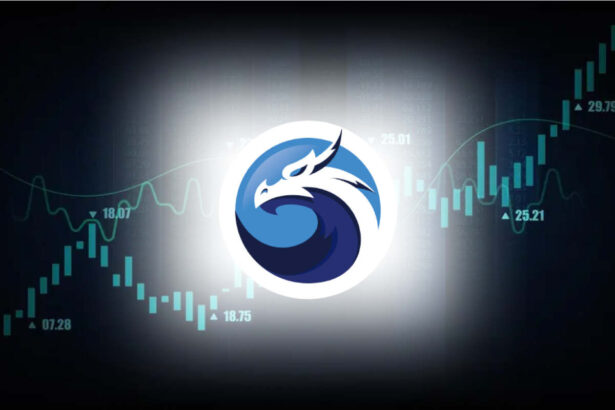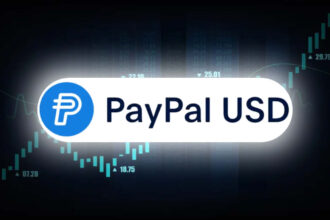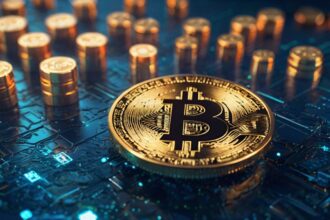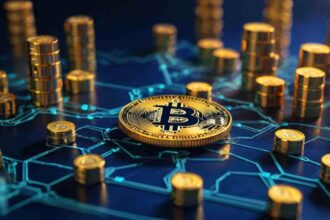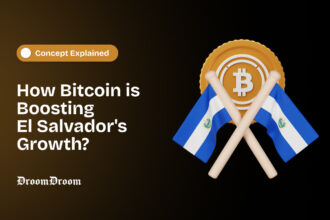The advent of QuickSwap into the congested world of DeFi has demonstrated that establishing a traditional DEX can take a lot of work. By doing so, QuickSwap continues to be at the forefront of championing the use of Layer-2 specifically designed for increasing trade, transacting, and operation traffic as the world continues to become busier every day, thanks to the high adoption rate of cryptos worldwide.
- Definition of QuickSwap
- What Is the Significance of Layer 2 Solutions in the Dex Case?
- QuickSwap Overview Background and History
- Key Features
- How Quickswap Works Layer-2 Technology Explanation
- Traditional Decentralized Exchange Comparison
- Benefits of Quickswap’s Approach
- Getting Started with QuickSwap
- Trading on QuickSwap
- Security Measures
- Challenges and Future Developments
- Community and Ecosystem
- The Future of Layer-2 Decentralized Exchanges
QuickSwap’s path was laid against the backdrop of the clogging of the Ethereum network together with the exorbitant fees associated with it, thus setting up a need for a possible remedy. It is a compass that guides someone through the confusing territories of Quickswap and directs them to the main points, special functions, and layer 2 features, giving them the strength to succeed.
Definition of QuickSwap
QuickSwap addresses scalability issues typical for other decentralized exchanges on the level 2 scaling solution in Ethereum. This essay aims to describe the main features of QuickSwap and how it operates using Layer 2.
What Is the Significance of Layer 2 Solutions in the Dex Case?
Scalable blockchains would require layered solutions, including lightweight off-chain frameworks. The need for scalability becomes even more crucial with the rise in popularity and the advent of DeFi and centralized exchanges. This issue is solved at a cost of more money and with the great efficiency of QuickSwap. This Layer-2 technology results in cheaper and faster transactions than the Layer-1 technology used by other trading platforms.
QuickSwap Overview Background and History
It started as a solution to traffic and too-high transfers on the Ethereum network. With this, it created a Swap exchange in seconds for cross-chain trading. The fast-swap’s history has been one that shows us how quickly things move nowadays, thus necessitating the layering of two solutions.
Key Features
One notable aspect of QuickSwap is that it employs Layer-2 scaling. Compared to layer-one systems, it can process more transactions in every transaction fee. Having integrated Layer-2 scalability makes it one of the most applicable platforms for trading in times of increased activity on the network.
Decentralization
The priority for QuickSwap is preserving a spirit of decentralization. It is a decentralized system whereby users have control of their funds. It is in line with the essence of blockchain technology since it is a decentralized network.
User-Friendly Interface
It is a matter of record that a user does not compromise on quality at all when it comes to using QuickSwap. It has an easy-to-use GUI that is meant for all traders regardless of experience. It facilitates trading, providing liquidity and other aspects of Defi without a glitch.
How Quickswap Works Layer-2 Technology Explanation
Layer-2 scaling is when transactions are conducted outside the main chain to decongest and increase speed. It uses an Optimistic Ethereum OE network — a layer-two scaling solution that employs Optimistic Rollups, resulting in faster, more affordable transactions. This part is about Layer-2 technology, how it affects it’s performance, and what it is all about.
Traditional Decentralized Exchange Comparison
It provides many benefits that set it apart from other decentralized exchanges. This comparison looks at transaction speed, value for money, and overall user experience, noting that traders embrace Layer-2 platforms such as Quickswap for decentralized trade.
Benefits of Quickswap’s Approach
The approach used by QuickSwap has several advantages to its users. This section focuses on how it tackles issues with ordinary exchanges.
Getting Started with QuickSwap
Creating an Account
QuickSwap makes onboarding as simple as possible. Users find registering easy; hence, the platform only discriminates against a few people. Security matters are discussed in this part with step-by-step instructions for creating an account.
Depositing Funds
After registration, users are required to put money in an account with QuickSwap. This is possible by employing different approaches, like transferring assets from other wallets. The clear directions and suggestions on how to deposit money enable the users to move on to the trading experience smoothly.
Navigating the Platform
A good understanding of the flow and functionalities of the QuickSwap interface is paramount for an excellent trade moment. The following part is like a walk-through into the webpage’s UI, which includes the trading dashboard, liquidity pools, and analytics instruments.
Trading on QuickSwap
Available Trading Pairs
Being multi-coin and having several trading pair options makes QuickSwap an ideal platform for individuals to transact using cryptocurrencies. This part looks at available pairs, among them common and upcoming coins, explaining the mechanics of the it’s trading exchange platform.
Order Types
QuickSwap provides several trading modes, which enable its traders to carry out different strategies efficiently. In this section, we shall explain different order types applicable to Q provide tips on how their effective implementation can be achieved.
Fees and Liquidity Provision
Knowing the fee strategy within Quickswap is important for merchants wanting efficient earnings. Furthermore, it supports liquidity provision from other participants, making a robust it’s ecosystem. The latter explores fees and the pros of being a liquidity provider on the protocol.
Security Measures
Smart Contract Security
Smart contracts are used for transactions in QuickSwap since it is a decentralized exchange. In this part, they will explore what security protocols it has adopted to protect user’s money.
Learn more about smart contract in Decentralized finance and all it entails negative and positive
User Account Security
In the world of decentralized finance, it is very important to secure user accounts. QuickSwap has strict security checks, including two-factor authorization and good password practices. This part shows users how to practice better security for their addresses.
Audits and Partnerships
When it comes to blockchain, transparency and accountability must be the case. QuickSwitch conducts frequent audits for verification purposes on security as well as integrity. The latter part of this section examines it’s auditing procedure and various collaborations that boost its legitimacy.
Challenges and Future Developments
Potential Challenges for Quickswap
However, every platform is flawed and has flaws. Briefly, this part contains various obstacles that may confront QuickSwap, including issues with regulators, volatility of markets, and tech advances, among others. Accepting these challenges ensures that it will adapt to an unanticipated crypto environment.
Roadmap and Upcoming Features
Its roadmap shows that QuickSwap is dedicated to innovation. This part explains what will change concerning it, giving users an idea about how the world of decentralized finance development will evolve soon.
Community and Ecosystem
Quickswap’s Community Engagement
Any good decentralized application is a crowd of people, and the power of each comes from all other parties involved. The site actively seeks feedback and comments on its community forums, via various social media networks, and through its governance arrangements. The following section reviews the vibrant of it’s community and why users’ engagement leads to the expansion and sustainability of this platform.
Partnerships and Collaborations
The interoperability of Quickswap’s ecosystem is improved by collaborating with its other projects and entities. It’s partners are where this part focuses. It talks about such collaborations and their impact on the total value.
The Future of Layer-2 Decentralized Exchanges
Finally, one thing is clear – layer-2 solutions have become the new game changer in decentralized exchanges, as manifested towards the end of this journey. Being scalable, decentralized, and easy to use makes it a solution leader. The road that took them from beating down the congestion problem on Ethereum mainnet to the efficiency hub at Optimism shows the platform’s durability and plasticity.
The emerging field of Decentralised Finance has set new standards, with QuickSwap as a pioneer for future decentralized exchanges. Utilization of layer 2 does not just tackle the challenges of scaling but also creates space for the development of a broader and accommodative economic system. With blockchain technology improving day by day, it is predictable that more decentralized exchanges like QuickSwap will employ Layer-2 solutions for smooth experiences of the users and adoption.
Faced with the challenges, QuickSwap is flexible but has a ‘proactive’ mindset. While facing regulatory environments or ahead with technological innovations, It’s commitment to transparency and community building sets it up to tackle hurdles and succeed in an ever-changing world.
Considering the future, the roadmap and the coming features tell of a vision for continuous improvement and advancements. However, it has grown because it was growing to satisfy growing user demand. This platform introduces new features or improvements, strengthening its foundation for the growing decentralized finance ecosystem.
QuickSwap’s story ultimately highlights what Layer-2 solutions can do for decentralized exchanges. Creating the account and engaging in trading or providing liquidity within this platform makes one become part of the community characterized by efficiency, security, and decentralization. It is an example that has shown direction to other decentralized exchanges on satisfying the present needs and defining a new age in decentralized finance.
